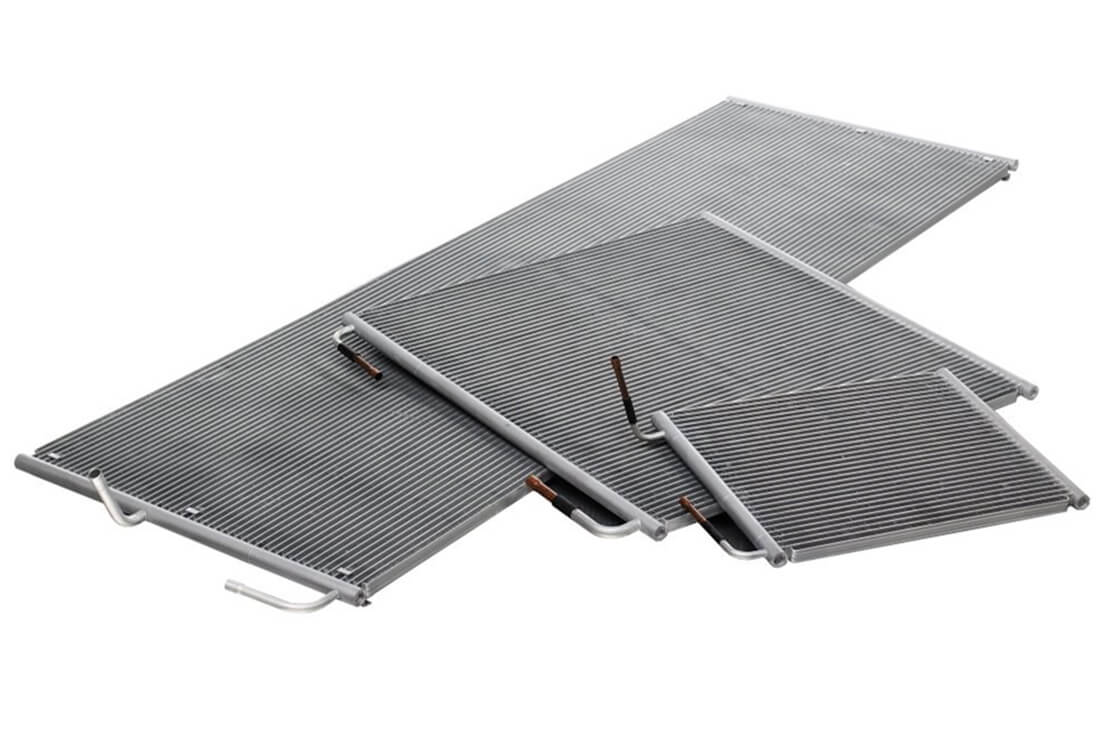Microchannel heat exchangers have long been recognized for their compact size and exceptional thermal efficiency. However, recent innovations in design and performance are pushing the boundaries of what these remarkable devices can achieve. From advances in materials science to groundbreaking manufacturing techniques, the latest developments in microchannel heat exchangers are revolutionizing thermal management across diverse industries.

Pushing the Limits of Efficiency
Efficiency is a cornerstone of microchannel heat exchanger design, and recent innovations are further enhancing their performance in this regard. Engineers are leveraging advanced computational modeling and simulation techniques to optimize the geometries of microchannels, maximizing heat transfer rates while minimizing pressure drop. Additionally, the integration of advanced materials with superior thermal conductivity properties is enabling microchannel heat exchangers to achieve unprecedented levels of efficiency in dissipating heat from high-power electronic components and industrial processes.
Enhanced Durability and Reliability
In addition to improving efficiency, innovations in microchannel heat exchanger design are also focusing on enhancing durability and reliability. The use of corrosion-resistant materials and advanced surface coatings is extending the service life of microchannel heat exchangers, particularly in harsh operating environments such as marine and aerospace applications. Furthermore, advancements in microfabrication techniques are enabling the production of microchannel heat exchangers with tighter tolerances and reduced manufacturing defects, ensuring consistent performance over extended periods of operation.
Customization and Adaptability
Another area of innovation in microchannel heat exchanger design is the ability to customize and adapt these devices to specific application requirements. Manufacturers are offering modular microchannel heat exchanger systems that can be easily configured and scaled to meet the needs of different industries and thermal management challenges. This flexibility allows for more tailored solutions that optimize space utilization and energy efficiency in a wide range of applications, from data centers to automotive cooling systems.
Integration with Emerging Technologies
As emerging technologies such as artificial intelligence (AI) and additive manufacturing continue to evolve, so too do the capabilities of microchannel heat exchangers. AI-driven optimization algorithms are being employed to fine-tune the design parameters of microchannel heat exchangers, resulting in superior performance and energy savings. Meanwhile, additive manufacturing techniques are revolutionizing the production of complex microchannel geometries, enabling the creation of highly efficient heat exchanger designs that were previously impractical or impossible to manufacture.
Future Directions
Looking ahead, the future of microchannel heat exchangers is filled with exciting possibilities. Continued advancements in materials science, manufacturing technologies, and computational modeling will drive further innovation in design and performance. Additionally, the integration of microchannel heat exchangers with emerging technologies such as 5G telecommunications and electric vehicle thermal management systems will create new opportunities for enhanced efficiency and sustainability.
In conclusion, innovations in microchannel heat exchanger design and performance are breaking boundaries and reshaping the landscape of thermal management. From increased efficiency and durability to customization and adaptability, these advancements are unlocking new possibilities for optimizing heat transfer in a wide range of applications. As the pace of innovation accelerates, microchannel heat exchangers will continue to play a crucial role in meeting the evolving thermal management needs of industries around the world.